Pink fruits are naturally pink in their flesh or skin due to pigments like lycopene and anthocyanins. These fruits include berries, citrus, and tropical varieties. Some popular pink fruits are strawberries, raspberries, pink grapefruits, dragon fruits, and guavas.
Pink fruits come in various shades, from soft pastel pinks to deep, rich pinkish-reds. Their flavors range from sweet to tart. Shapes vary from small, round, heart-shaped, oval, or pear-shaped.
Besides looking and tasting great, pink fruits are healthy and versatile in the kitchen. You can eat them fresh or add them to smoothies, salads, desserts, and drinks for extra color and flavor.
In this article, you’ll discover a variety of pink fruits from different categories. At the end, you’ll also find where pink fruits grow the most.
Let’s start!
30 Common Pink Fruits Around The World
Here are 30 of the best fruits with pink colors, ranging from various types. Make use of the filter to find your favorite fruits.
Strawberry
- Denmark
- Aggregate Fruit
Strawberries are beloved worldwide for their sweet, slightly tart taste. These heart-shaped, red, or pink fruits are sprinkled with tiny seeds that add a pleasant crunch. They grow best in temperate regions, peak season from late spring to early summer.
Top producers include China, the U.S., and Mexico. You can enjoy them fresh, in salads, smoothies, desserts, or as delicious jams and preserves. They also pair wonderfully with balsamic vinegar.
Watermelon
- Turkmenistan
- Melon
Watermelon is the common summer fruit with its thick green rind and juicy pink flesh dotted with black seeds. It’s incredibly refreshing, mildly sweet, and has a crisp texture.
Originally from Africa, watermelons are now grown worldwide, with China being the biggest producer. Perfect for picnics and barbecues, they’re best enjoyed fresh, in juices, smoothies, or as a cool addition to salads and summer treats like sorbets and popsicles.
Peach
- Drupe/stone Fruit
Peaches are cherished for their sweet, juicy flavor. Originally from China, they now flourish in warm temperate regions like the U.S., Italy, and Spain. With fuzzy, pinkish-red skin and yellow or white flesh around a large pit, peaches are a summertime favorite.
Harvested from late spring through summer, peaches come in freestone and clingstone varieties. They’re delicious fresh in salads and smoothies or baked into classic desserts like pies and cobblers. You can also find them canned, dried, or made into delicious jams and preserves.
Raspberry
- Aggregate Fruit
Raspberries are small fruits made up of tiny pink drupelets, each with a seed. Originally from Europe and northern Asia, they are now grown in temperate regions like the U.S., Russia, and Poland.
Their season runs from late spring to early autumn, offering a sweet yet tangy flavor. Enjoy them fresh, in cereals, yogurts, smoothies, or baked into muffins and tarts. Raspberries also shine in jams, jellies, and sauces, adding a refreshing touch to many dishes.
Pomegranate
- Afghanistan
- Azerbaijan
- Iran
- Berry
Pomegranate, native to the Middle East, thrives in regions like Iran, India, and the Mediterranean. This shrub or small tree grows up to 20 feet, producing round fruits with tough, reddish-pink skin.
Inside, juicy, ruby-red arils encase tiny seeds, offering a sweet-tart flavor and crunchy texture. Harvested from September to February in the Northern Hemisphere and March to May in the Southern Hemisphere, pomegranates can be eaten fresh, used in salads, or juiced.
Lychee
- Drupe/stone Fruit
Lychee is a tropical fruit from China, now grown in India, Southeast Asia, and South Africa. It features a rough, pinkish-red skin that encases translucent white flesh and a central seed. The fruit’s taste is a unique mix of sweet and floral, similar to grapes and roses.
Harvested in late spring and early summer, lychees are enjoyed fresh, canned, or dried. They add exotic sweetness to desserts, salads, and beverages. In Asian cuisine, lychees often flavor ice creams, sorbets, and cocktails.
Pink Grapefruit
- Citrus
Pink grapefruit, a hybrid of pomelo and sweet orange, thrives in warm climates like Texas, Florida, Israel, and South Africa. It has thick yellow skin with a pink blush and juicy pink flesh that balances sweet and tart flavors.
Available from late fall to early spring, varieties like Ruby Red and Star Ruby are especially sweet. With a firm, juicy texture, pink grapefruit is perfect for breakfast, fruit salads, juices, and cocktails. It also pairs well with fish and pork, and works wonderfully in desserts and marinades.
Guava
- Berry
Guava, a tropical fruit from Central America, is now widely grown in India, Mexico, and Brazil. It has green skin that turns yellow when ripe, with flesh that ranges from white to pink or red. The taste is a blend of sweet and slightly tart, similar to pear and strawberry, with a firm yet juicy texture and tiny edible seeds.
Typically harvested in late summer and early fall, guava can be found year-round in tropical climates. It’s enjoyed fresh, in jams, jellies, preserves, savory dishes, sauces, and beverages like juices and teas.
Dragon Fruit
- Vietnam
- Berry
Dragon fruit, or pitaya, is a striking fruit from Central and South America, now grown in tropical regions. It comes in pink, red, or yellow skin, with flesh ranging from white to deep magenta.
The pink variety has mildly sweet flesh speckled with tiny black seeds, tasting like a mix of pear and kiwi. In season during summer and early fall, dragon fruit is versatile. Enjoy it fresh, in salads, desserts, smoothies, and cocktails.
Pink Lady Apple
- Pome Fruit
The Pink Lady apple, or Cripps Pink, was developed in Australia by John Cripps from Golden Delicious and Lady Williams apples. Now grown in the U.S., New Zealand, and South Africa, this variety is known for its rosy pink skin speckled with pale lenticels and creamy white flesh.
Harvested in late fall and available year-round, Pink Lady apples are loved for their sweet-tart flavor and crisp, juicy texture. They are perfect for eating fresh, adding to salads, baking in pies, or making sauces, and their firm texture holds up well in cooking.
Pink Pearl Apple
- Pome Fruit
Pink pearl apples, developed by Albert Etter in California in 1944, are known for their vibrant pink flesh and sweet-tart flavor. These medium-sized apples have a conical shape and yellow-green skin, sometimes with a rosy blush.
Ripening from late August to mid-September, Pink Pearl apples thrive in temperate U.S. climates. Their texture is perfect for fresh eating and baking in pies, tarts, and crisps.
Cranberry
- Berry
Cranberries are native to North America, especially the northeastern U.S. and Canada. These small, round berries are known for their bright red to pink color and tart flavor, growing on low vines in bogs and wetlands.
Harvested from September to November, cranberries are typically used in processed forms due to their tartness. They are essential in holiday dishes like cranberry sauce and are popular in juices, dried snacks, baked goods, salads, jams, jellies, and various sauces.
Prickly Pear
- Israel
- Berry
Prickly pear, or cactus pear (Opuntia), comes from Mexico and the southwestern U.S. This oval-shaped fruit grows on cactus pads, called nopales. It comes in green, red, pink and purple colors, with thick skin covered in fine spines.
The taste is a sweet, slightly tangy blend of watermelon, bubblegum, and pear, with a soft, juicy texture and tiny edible seeds. In season from mid-summer to early fall, prickly pears are great fresh, in smoothies or made into jams. They are also used in Mexican dishes like salads, tacos, and stews.
Pink Pineapple
- Antigua and Barbuda
- Taiwan
- Berry
Pink pineapple, or Pinkglow pineapple, is a unique variety developed by Del Monte and grown in Costa Rica. It features distinctive pink flesh due to the natural antioxidant lycopene and has a similar shape and size to traditional pineapples, with golden-yellow skin and spiky green leaves.
This fruit is tender, juicy, and sweet, with a less acidic taste than regular pineapples. Available year-round, pink pineapples add color and sweetness to fruit salads, desserts, and beverages like smoothie bowls and tropical cocktails.
Java Apple
- Pome Fruit
Java apple, or wax apple, is a tropical fruit from Southeast Asia, including Indonesia, Malaysia, and Thailand. These bell-shaped fruits range from green, pink to deep red and have a shiny, waxy appearance.
With a crisp, juicy texture and mildly sweet flavor, Java apples are similar to apples and pears. In season twice a year, from May to September and November to March, they are perfect fresh, in salads, or in desserts, often enjoyed with a touch of salt or sugar.
Pink Grapes
- Berry
Pink grapes, including varieties like Pink Muscatel, Tickled Pink, and Flame Seedless, are a great addition to table grapes.
Grown in temperate regions such as California, Europe, and Australia, these small, round grapes range from light pink to deep rose and are known for their sweet, slightly tart flavor.
Typically harvested from late summer to early fall, pink grapes have a firm, juicy texture perfect for fresh eating. They are also used in salads, cheese platters, desserts, and juicing.
Pink Lemon
- Citrus
Pink lemon, also known as Citrus limon ‘Eureka Variegated Pink,’ is notable for its green and yellow-striped skin and pink flesh. This lemon is grown primarily in Southern California and owes its pink hue to the antioxidant lycopene.
It has an elongated shape, less acidic taste, and sweeter flavor than regular lemons. When ripe, the stripes fade, and the pink color intensifies, usually available from late winter to early summer. These lemons add a sweet, floral twist to lemon bars, sorbets, and pies.
Pink Blueberry
- Berry
The ‘Pink Lemonade’ variety of pink blueberries, developed by the U.S. Department of Agriculture, ripens to a bright pink color, unlike traditional blueberries.
Blooming with pinkish-white, bell-shaped flowers in spring, the berries transition from green to white, and finally to vibrant pink by mid to late summer. They have a sweet, almost tropical flavor with a hint of lemon, making them perfect for fresh eating, salads, or baking into desserts.
Pink Currant
- Berry
Pink currants produce clusters of translucent pink berries. Native to Europe, they are now grown in temperate regions like North America for their unique color and mild flavor. The deciduous shrubs typically grow to about 3 to 5 feet tall and wide, with berries ripening to a beautiful pink mid-summer.
With a sweet-tart flavor, milder than red or black currants, these juicy, slightly firm berries can be eaten fresh, used in baking, or made into jams and jellies, and are a lovely addition to summer salads and desserts.
Hidden Rose Apple
- Pome Fruit
The Hidden Rose Apple, or Airlie Red Flesh apple, is celebrated for its striking pink-red flesh and unique flavor. Originating from Airlie, Oregon, this medium-sized, slightly conical apple has light green to yellow skin with a subtle blush.
Its taste combines sweet and tart notes with hints of berry and melon, and its firm, crisp flesh provides a satisfying crunch. They are versatile, perfect for fresh eating, adding color to salads, and excellent for baking pies, tarts, and other desserts.
Pink Banana
- Berry
The Pink Banana, from Assam and the eastern Himalayas, has vibrant pink skin and a fuzzy texture, earning it the nickname “hairy banana.”
These small, 3-inch bananas have a hot pink peel that splits open when ripe, revealing sweet, white flesh with hints of apple and raspberry, though filled with hard black seeds. Thriving in tropical climates, they are more ornamental than edible, often used in gardens and floral arrangements.
Sampinit
- Aggregate Fruit
Sampinit is a wild raspberry native to the Philippines, thriving in mountainous regions. This bramble shrub produces clusters of small, pink to red berries during the dry season.
The berries, similar to traditional raspberries, offer a sweet-tart flavor with a juicy, soft texture and tiny seeds for a slight crunch. Widely used in Filipino cuisine, Sampinit can be eaten fresh, made into jams, jellies, and preserves, or added to desserts and beverages.
Pink Tomato
- Berry
Pink tomatoes, like Pink Brandywine and German Pink, are prized heirloom varieties known for their exceptional flavor. The Pink Brandywine, with its large beefsteak shape and pinkish-red color, offers a sweet and tangy taste, perfect for salads, sandwiches, and sauces. Celebrated for its juicy, meaty texture, it originated in the U.S.
German Pink tomatoes, popular in Europe and North America, have a sweet yet slightly tart flavor. Thriving in well-drained soils, they are in season from late summer to early autumn, ideal for fresh eating, canning, and cooking.
Lilly Pilly Berries
- Berry
Lilly Pilly berries, also known as Riberries, are native to Australia and have been part of Aboriginal diets for centuries.
These small, pear-shaped berries range from pink-red to purple, with a glossy, dense texture and a sweet-tart flavor similar to cranberries and cherries. Harvested from late spring to early fall, they thrive in the rainforests of New South Wales, Queensland, and Western Australia.
Versatile in the kitchen, Lilly Pilly berries can be eaten fresh, added to salads, or used in jams, sauces, chutneys, and desserts.
Pink Mulberry
- Aggregate Fruit
Pink mulberry is a fruit-bearing tree native to North America. The small, elongated berries start white, turn pink, and ripen to dark red or black, resembling blackberries. With a sweet, slightly tart flavor and juicy, crunchy texture, they are a treat.
Ripening from late spring to early summer, these berries thrive in temperate climates, particularly in the eastern United States. Enjoy them fresh, or use them in salads, desserts, smoothies, jams, jellies, and wine.
Rambutan
- Drupe/stone Fruit
Rambutan, native to Southeast Asia, flourishes in Thailand, Malaysia, Indonesia, and the Philippines. Named from the Malay word “rambut” for hair, its spiky, hairy pink exterior covers juicy, white, translucent flesh with a sweet, slightly tart flavor, similar to lychee.
In season from late April to September, rambutans are popular in local markets and can be eaten fresh, added to fruit salads, smoothies, or even savory dishes like curries and stir-fries.
Yangmei
- Berry
Yangmei, also known as Yumberry or Chinese Bayberry (Myrica rubra), is native to China and widely grown in Japan and Korea. This round fruit, about the size of a cherry, boasts a bright pink to deep red color with a unique, knobby surface.
Its juicy, tender flesh offers a sweet-tart flavor, akin to a mix of strawberry and pomegranate. Harvested from late spring to early summer, yangmei can be eaten fresh or used to make juices, wines, and preserves. It is also dried or canned for extended storage.
Rosé Strawberries
- Aggregate Fruit
Rosé strawberries, exclusively grown by Driscoll’s, are a unique variety known for their pale pink skin and creamy white interior. These strawberries have a distinctive sweet-tart flavor with peach and floral notes, reminiscent of rosé wine.
Available from June to September in select U.S. retailers, they are perfect for summer treats, whether enjoyed fresh, in desserts, or as a refreshing addition to salads and beverages.
Rainier Cherries
- Drupe/stone Fruit
Rainier cherries, named after Mount Rainier in Washington State, are prized for their delicate flavor and striking appearance. With yellow skin and a pink blush, these cherries have firm, juicy flesh and a sweet taste with hints of honey and almond.
Typically in season from June to early August, they are grown primarily in Washington and Oregon. Rainier cherries are perfect for fresh snacking, baking, and adding to salads. Their high sugar content makes them ideal for desserts.
Loganberries
- Aggregate Fruit
Loganberries, a hybrid of raspberries and blackberries, originated in California in the late 19th century. These deep red to dark pink berries are slightly larger than raspberries and offer a unique flavor combining blackberry tartness with raspberry sweetness.
In season from late summer to early fall, they thrive in temperate climates. Loganberries can be enjoyed fresh, made into jams and jellies, or used in baking and desserts. Their high pectin content makes them perfect for preserves.
Where Do Pink Fruits Grow the Most?
These pink fruits grow best in warm, sunny climates, often in regions near the equator with consistently high temperatures. This allows them to develop their distinctive color and flavor profiles. Here’s a summary of where these fruits thrive the most:
The Americas
Common North American fruits with pink hues include strawberries, raspberries, cranberries, and pink tomatoes. The temperate climate of the United States and Canada, particularly in regions like California, Florida, and British Columbia, supports the cultivation of these fruits.
Strawberries and raspberries are widely grown in states with cooler climates, while cranberries thrive in the bogs of the northeastern United States and Canada.
Thanks to diverse climates, pink South American fruit varieties pride themselves on watermelon, guava, and pink pineapples. Brazil, in particular, is a significant producer of watermelons. Guava is widespread in tropical regions of the continent, thriving in countries like Colombia and Venezuela.
Europe
Fruits in Europe that come in pink colors include strawberries, raspberries, and grapes. Countries like Spain, France, and the United Kingdom have favorable climates for growing strawberries and raspberries.
Africa
Watermelon and pomegranate are among the common African fruits featuring pink shades. Watermelons are extensively grown in countries like Egypt and Sudan, where the hot, dry climate is ideal.
Pomegranates are cultivated in the Mediterranean regions of North Africa, including Morocco and Tunisia.
Asia
Regarding Asia’s abundant fruits, these natural products come in various vibrant pink colors, such as lychee, pink grapefruit, dragon fruit, and rambutan. China is a leading producer of lychee and yangmei, while Vietnam and Thailand are known for their dragon fruit.
Pink grapefruit is widely grown in India and China, and rambutan thrives in the tropical climates of Southeast Asia.
Oceania
In Australian fruit collection, strawberries, raspberries, and lilly pilly berries are common. The country’s diverse climate, ranging from tropical to temperate, supports the growth of these fruits.
Strawberries and raspberries are predominantly grown in temperate regions, while lilly pilly berries are native to the rainforests of eastern Australia.
Other regions in Oceania, like New Zealand, grow strawberries and raspberries. The climate here is similar to that of Australia, allowing for cultivating these fruits.
Pink fruits are not only beautiful but also packed with flavor and nutrients. Share your favorite pink fruit in the comments and explore other fruits on this site!


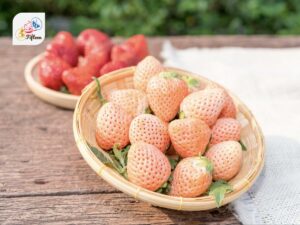
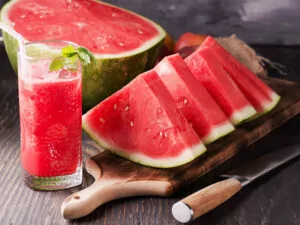
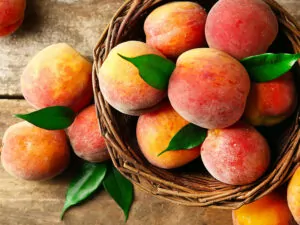
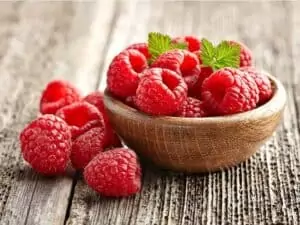
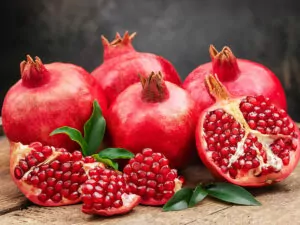
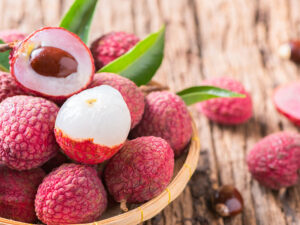
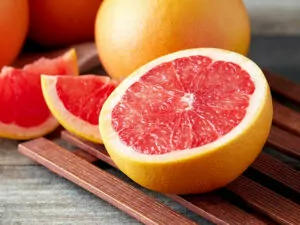
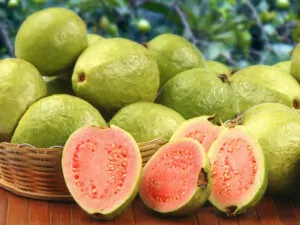
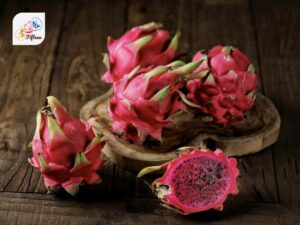
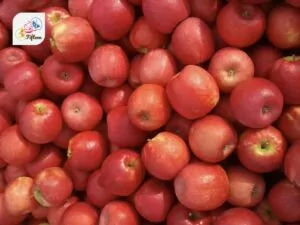
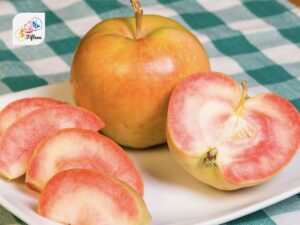
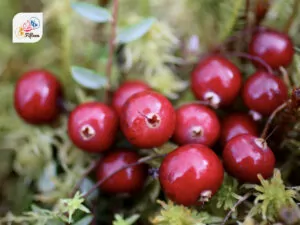
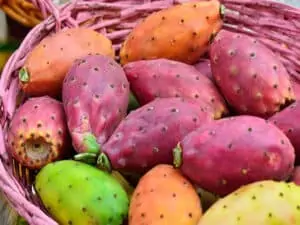
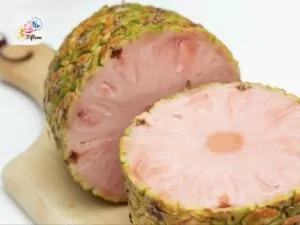
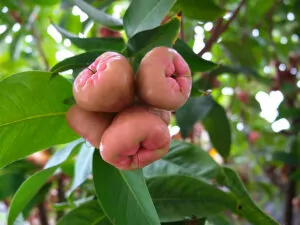
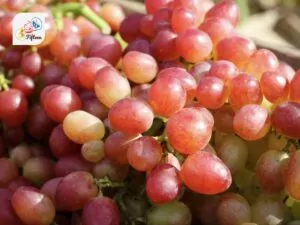
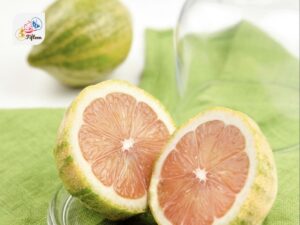
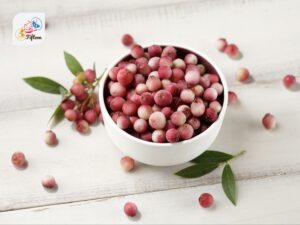
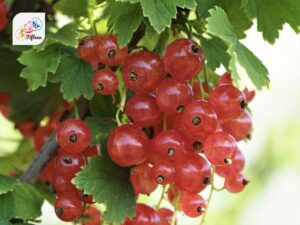
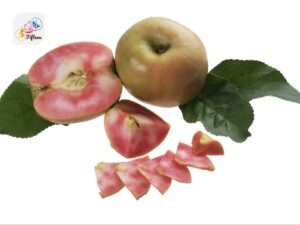
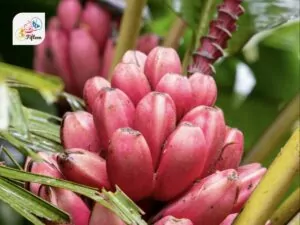
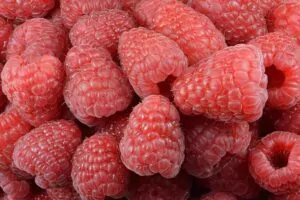
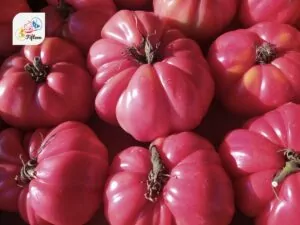
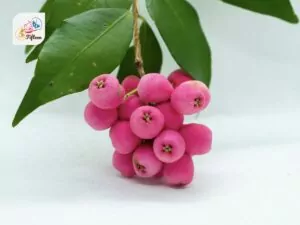
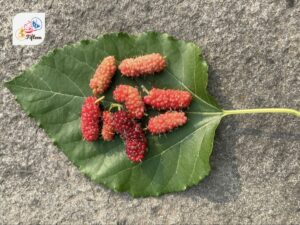
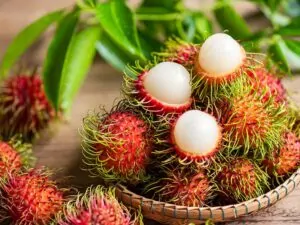
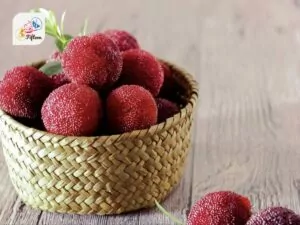
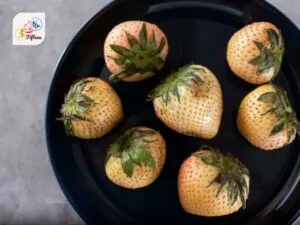
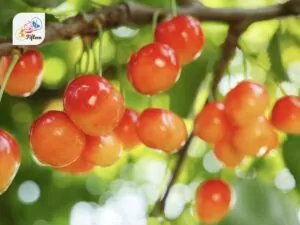
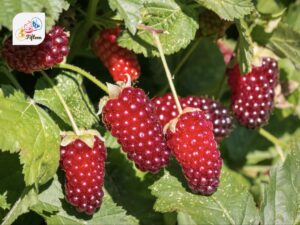
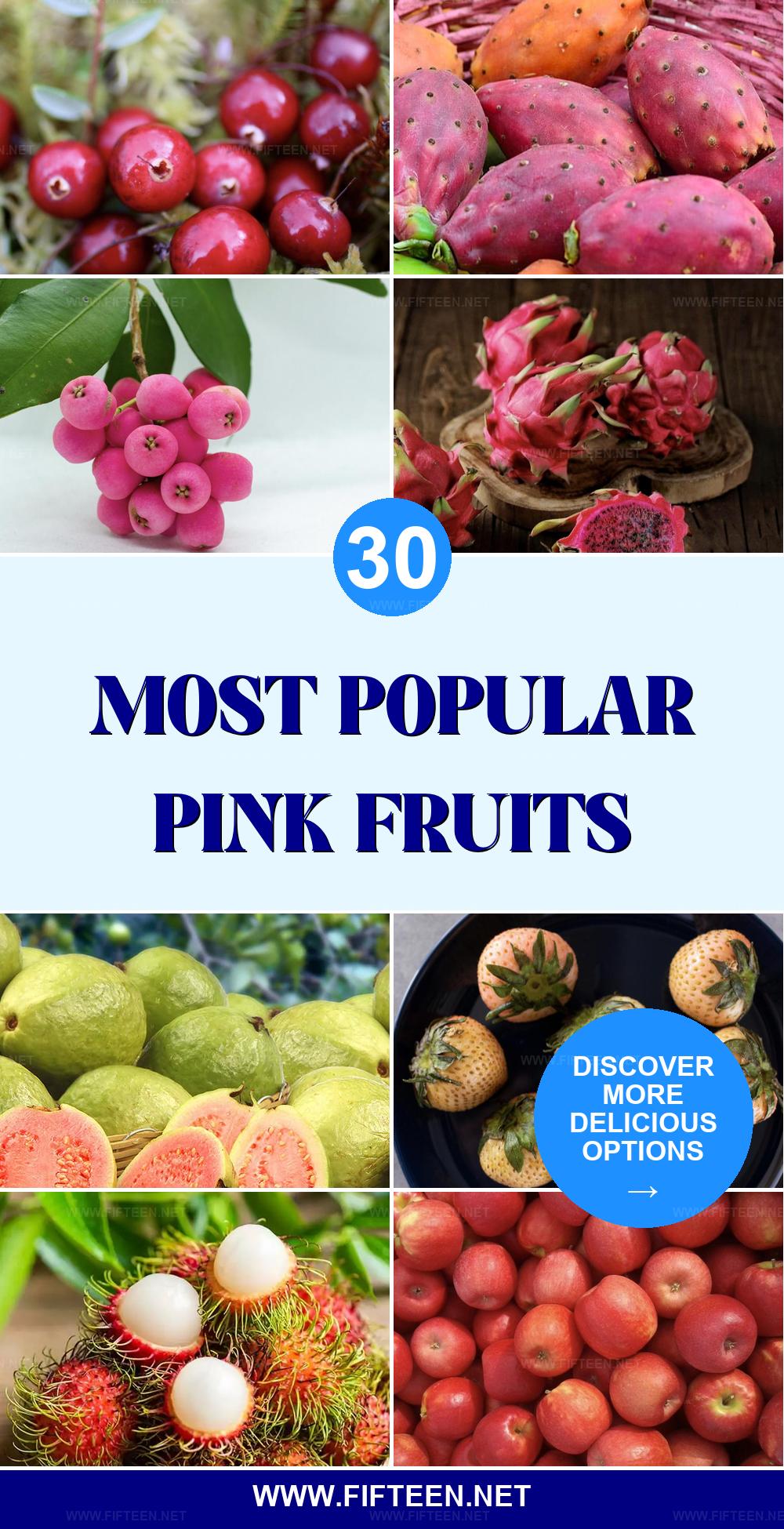
Jamie Scott
Editor in Chief, Senior Content Writer
Expertise
Home Cooking, Meal Planning, Recipe Development, Baking and Pastry, Food Editor, Cooking-video Maker, Western Food Evaluation Expert
Education
Le Cordon Bleu College of Culinary Arts
Local Community College, New York, NY
Jamie Scott is a skilled culinary expert and content creator specializing in Western cuisine. With over 15 years in the culinary field and formal training from Le Cordon Bleu, Paris, Jamie deeply understands how to blend nutrition with delicious flavors. His passion for cooking matches his commitment to making healthy eating accessible and enjoyable.
On Fifteen.net, Jamie brings a fresh perspective to classic dishes and beverages, offering readers insightful recipes, cooking tips, and a fresh view on meal planning that emphasizes taste, health, and simplicity.